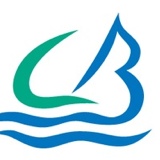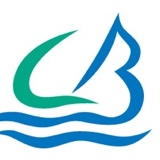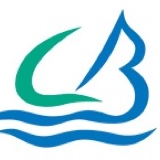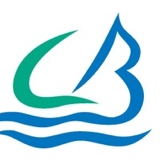Title Page
-
Conducted on
-
Proprietor
-
Application Number
-
ABN Number
-
Trading Name
-
Location
-
Officers
-
Food Safety Supervisors Name
-
Food Safety Supervisors Certificate Number
-
Interviewee
-
Interviewees Position
A. Demonstration of Food Safety Knowledge
-
1. Is there a Food Safety Supervisor in place
-
2a. The relevant person can demonstrate that correct use of the thermometer to measure temperature of PHU food being stored or displayed
-
2b. What temperature must cold potentially hazardous food be kept at
-
2c. Does the interviewee know cold PHF required temperature?
-
3a. Does the food business sanitise food contact surfaces of equipment?
-
3b. If yes, what method is used?
-
4. There are adequate written instructions for staff to follow when diluting and applying sanitiser? These may be found on level, MSDS, other information sheet or in house instructions
-
5. The relevant person can demonstrate correct dilution of chemical sanitiser (and confirmation of the dilution?
-
6. The business can demonstrate correct application and use of sanitiser?
-
7. Can the interviewee explain cross contamination?
-
8. Can the interviewee explain the difference between cleaning and sanitising?
-
The business process food using the following equipment
-
Meat Slicer
-
Cling Wrap Dispenser
-
Vacuum Sealer
-
Knife and Cutting Board
-
10. The relevant person can demonstrate effective sanitising of the specific equipment above
B. Processing and Activities
-
11. Is meat or cheese sliced or cut onsite?
-
12. Is meat or cheese opened from packaging and sliced in advance?
-
13. How long is sliced meat or cut cheese kept between slicing (removing from packaging) and time of sale?
-
14. How is traceability of opening/slicing of meat or cheese on display maintained?
-
15. How is 'First In/ First Out' (FIFO) of meat and cheese managed?
-
16. Have a staff member demonstrate hand washing. Was this done correctly?
C. Review of Cleaning and Sanitising Conditions
-
17. Is the premises visibly clean:
-
Display Cases- sliding Windows, front window, rear benches, internal area
-
Floors, drains, walls, splashbacks
-
Exhaust canopies, air-conditioning vents, ceiling
-
Sinks, drying and storage racks
-
Preparation benches
-
Waste bins (and are liners in place)
-
Is there adequate cleaning equipment, is cleaning equipment clean, does it pose no contamination risk
-
Are chemicals used in accordance with manufacturers instructions: correct product labelled in spray bottles, diluted prior to use, no holes cut in containers, no unlabelled spray bottles
-
Are hand washing facilities accessible and used solely for hand washing? Are they clean and supplied with soap, warm water and drying facilities?
-
Is the delicatessen preparation equipment clean? Slicer, knives, trays and bowls, cutting boards, cling wrap machines, scales, vacuum pack machines, other utensils?
-
Are temperature probes working, clean, undamaged and easily located?
-
Is the coolroom clean with no heavy buildup, including walls, floors, ceiling, fan unit, doors, racking?
-
Are light covers in place and undamaged? Are insect units clean, in working order and not above food preparation areas?
-
D. Food Safety Culture
-
1. How highly do you think food safety is ranked in the business? ( compared to profit, brand recognition, export opportunities)
-
1a. Briefly describe who leads food safety in the business? (eg what positions/levels)
-
1b. How do these leaders show that food safety is important? (eg meetings, regular rounds with staff, formal inspections etc)
-
2a. Do all employees understand what is expected of them in food safety performance? Please explain
-
2b. Are they held responsible for food safety? Please explain.
-
3a. What kind of food safety training is available fir staff? (eg induction training, on the job learning, mentoring, courses)
-
3b. How do you know if this is enough for people to do what they know?
-
4. What food safety information is recorded and how is it recorded?
-
5. What is done with this information?
-
6. How are food safety problems and complaints addressed? Please give an example of how things were changed after a problem came up?
Food Safety Questionaire - Questions for Staff
-
1. How highly do you think food safety is ranked in the business? ( compared to profit, brand recognition, export opportunities)
-
2. Briefly describe who encourages food safety in the business and how (eg managers/supervisors/co-workers, through meetings/presentations/informal chats/formal inspections etc)
-
3. Do your co-workers understand what is expected of them to make sure safe food is produced? Please explain.
-
4. Do you know who is responsible for food safety in your workplace? (eg managers/supervisors/everyone etc) Please explain.
-
5. Do you think you can get all of the food safety training you need to do your job well? Why/why not?
-
6a. What food safety information is recorded in the workplace and how is it recorded?
-
6b. What is done with this information?
-
7. Has anything changed after a food safety complaint or problem has come up? Is so, please give an example.
E. Food Business Score
-
Operational performance
-
Skills and knowledge
-
Cleanliness of premises and equipment
-
Sanitisation of equipment
-
Temperature control
-
Construction and pest management
-
Score
-
Process Control
-
Cleaning/Sanitising
-
Meat and cheese supplier identifiable/traceable
-
Meat and cheese stored under temperature control
-
Delivery temperatures, condition of delivery and used by dates checked
-
Cut meats and cheeses displayed under temperature control
-
FIFO system in place
-
Receiving of product
-
Control of time product is held after opening/portioning
-
Microbiological Results
-
Boot Swabs: floor near cabinet, coolroom
-
Slicers
-
Bench around slicer
-
Display cabinet door (including rails and handles)
-
Cling wrap dispenser
-
Utensils (tongs, spoons)
-
Cutting boards
-
Scales
-
Coolroom (composite shelves, door, cooling unit)
-
Wash up sink
-
Food sliced in house (up to three samples)
Operational Performance
-
The combined score will be used to determine a category
F. Factsheets
-
Identify the fact sheets that have been supplied to the proprietor of the food business (and irrelevant note if a translated version was supplied in which language):
-
Food Safety Supervisor
-
Cleaning and Sanitising
-
Sanitising of Equipment
-
Temperature Control
-
Health and Hygiene of Food Handlers
-
Handwashing
-
Pest Control
-
Other











